F-Curve Properties¶
Active F-Curve¶
Ссылка
- Панель:
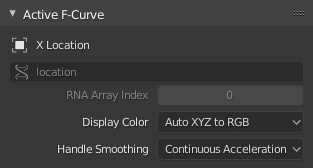
Active F-Curve panel.¶
This panel displays properties for the active F-Curve.
- Channel Name
Имя свойства, которое анимируется кривой.
- Data Path
Программный путь к свойству.
- RNA Array Index
The index into the property, for multi-value properties. As an example, the Location property has three values (X, Y and Z), which means it can have three different curves with indices 0, 1 and 2.
- Display Color
How to determine the color of the F-Curve in the Graph editor.
- Auto Rainbow
Assigns a unique color to each curve that uses this setting.
- Auto XYZ to RGB
Detects curves that animate an X/Y/Z coordinate and colors them red/green/blue accordingly.
- User Defined
Позволяет вам самостоятельно выбрать цвет.
- Сглаживание рукояток (handle smoothing)
How to compute the Bézier handles when using the Automatic or Auto Clamped handle type.
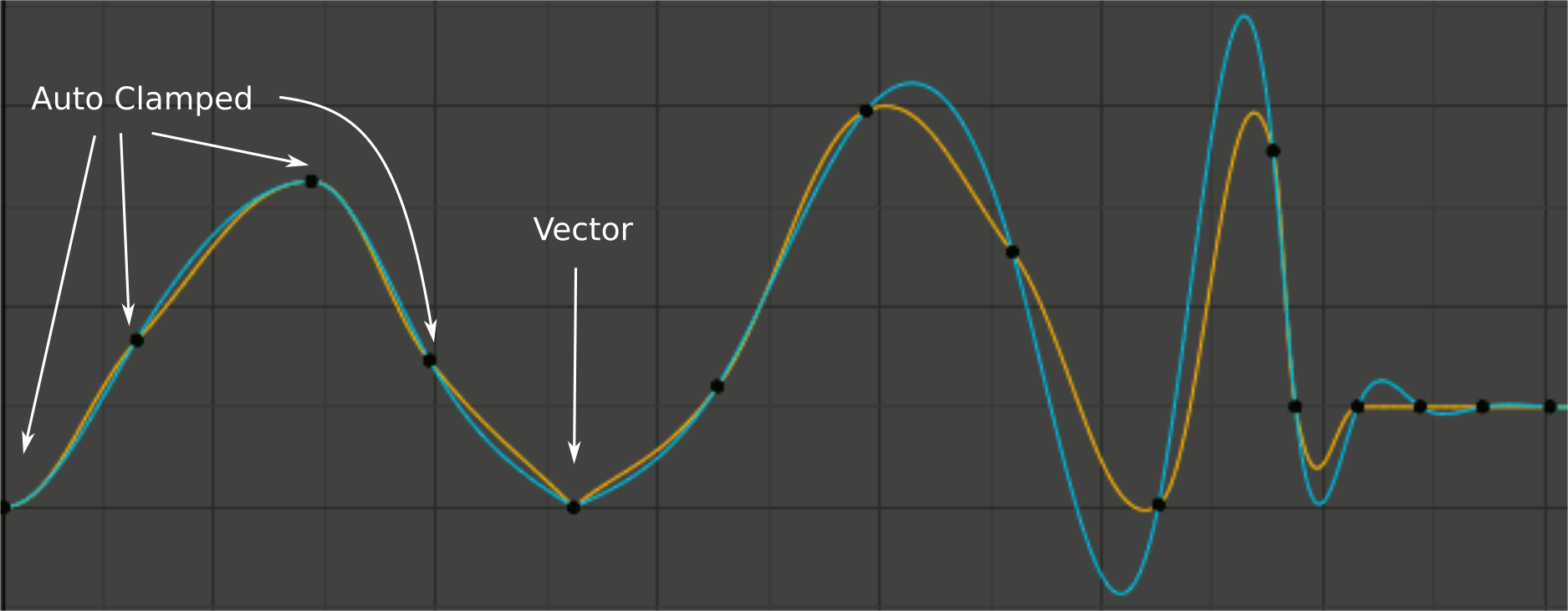
Handle smoothing mode comparison.¶
- Нет (none)
Only directly adjacent key values are considered when computing the handles.
This older method is very simple and predictable, but it can only produce truly smooth curves in the most trivial cases. Notice that the red curve in the image above has a few kinks in the middle.
- Continuous Acceleration
A system of equations is solved in order to avoid or minimize jumps in acceleration at every keyframe.
It produces much smoother curves out of the box, but necessarily means that any changes in the key values may affect interpolation over a significant stretch of the curve; although the amount of change decays exponentially with distance. This change propagation is stopped by any key with Free, Aligned, or Vector handles, as well as by extremes with Auto Clamped handles.
The mode also tends to overshoot and oscillate more with fully Automatic handles in some cases (see the image above). So it is recommended to use Auto Clamped by default, and only switch to Automatic handles in places where this is desired behavior. That effect can also be reduced by adding in-between keys.
Совет
Considering the upsides and downsides of each mode, Continuous Acceleration should be better suited for limited animation, which uses a small number of interpolated keys with minimal manual polish. In case of highly polished high key rate animation, the benefits of smoothing may not outweigh the workflow disruption from more extensive change propagation.
Active Keyframe¶
Ссылка
- Панель:
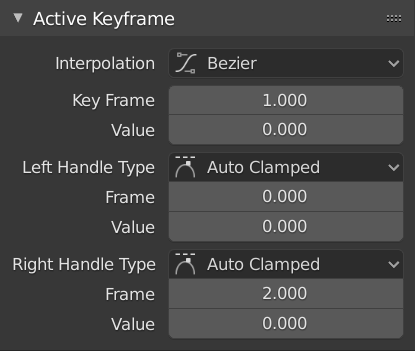
Active Keyframe panel.¶
- Интерполяция (interpolation)
The interpolation to use between the active keyframe and the next.
Интерполяция (interpolation)
- Константа (сonstant):
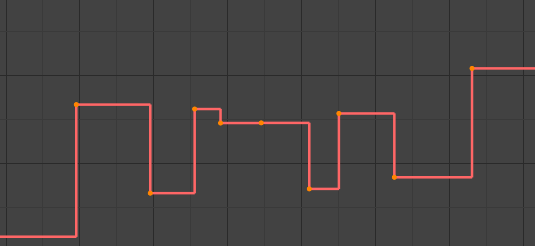
Constant.¶
The curve holds the value until the next keyframe, producing a stair step effect with very abrupt changes. Normally only used during the initial «blocking» stage in pose-to-pose animation workflows.
- Линейно (linear):
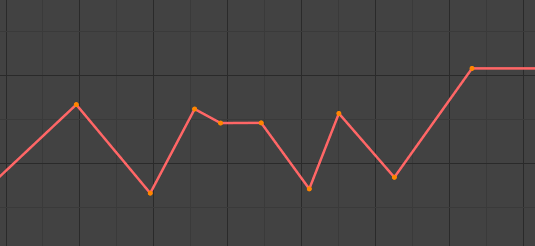
Linear.¶
The curve goes from one keyframe to the next in a straight line, which prevents abrupt changes in value but not in speed. By creating two keyframes with Linear interpolation and extrapolation, you can easily make a straight line curve that goes on forever.
- Безье (Bézier):
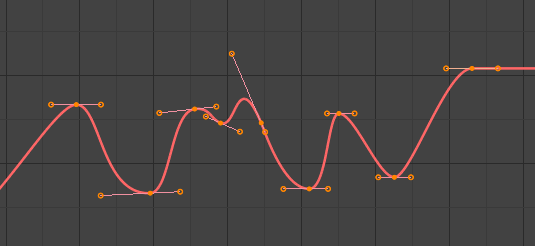
Безье (Bézier).¶
The default interpolation, which is smooth in both values and speed.
Примечание
F-Curves for properties that only accept discrete values will always have a stair step pattern, no matter which option you chose.
Easing (by strength)
A set of interpolations that specialize in accelerating or decelerating an value, «easing» it from a stationary into a moving state or vice versa.
См. также
For more info and a few live demos, see easings.net and Robert Penner’s Easing Functions.
Dynamic Effects
These additional easing types imitate (fake) physics-based effects like bouncing.
- Сзади (back)
With Ease In, the value first moves away from the target and then shoots towards it. With Ease Out, it goes towards the target, overshoots it, and then returns.
- Сзади (back)
The size and direction (i.e. above/below the curve) of the overshoot.
- Bounce
Makes the value bounce a few times with exponential decay, like a tennis ball that was dropped on the floor.
- Упругое (elastic)
Makes the value overshoot the target, then rebound and undershoot it, then overshoot it again… with ever-decreasing intensity until it eventually settles.
- Амплитуда (amplitude)
How far the value initially overshoots its target.
- Period
How much time there is between each oscillation.
- Ослабление (easing)
This option only applies to the Easing and Dynamic Effects categories above.
- Automatic Easing
Automatically pick the most commonly used type: Ease In when using one of the Easing interpolations, and Ease Out when using one of the Dynamic Effects.
- Ease In
The value accelerates, moving slowly at the beginning of the curve segment and speeding up towards the end.
- Ease Out
The value decelerates, moving quickly at the beginning of the curve segment and slowing down towards the end.
- Ease In Out
The value moves slowly in the beginning, speeds up towards the middle, and slows down again towards the end.
- Ключевой кадр (key frame)
Кадр активного ключевого кадра.
- Значение (value)
Значение активного ключевого кадра.
- Left/Right Handle Type
When the keyframe’s interpolation is set to Bézier, the shape of the curve around it is influenced by its handles. Each handle has its own type which determines if (and how) Blender positions it automatically, and if not, how much freedom you have in positioning it manually.
You can change the handles“ types in multiple ways: using these dropdowns in the Sidebar; through the menu ; or by pressing V and selecting from the popup menu.
If you want to change an automatic handle’s position, just drag it; you don’t need to manually change its type first.
- Автоматически (automatic):
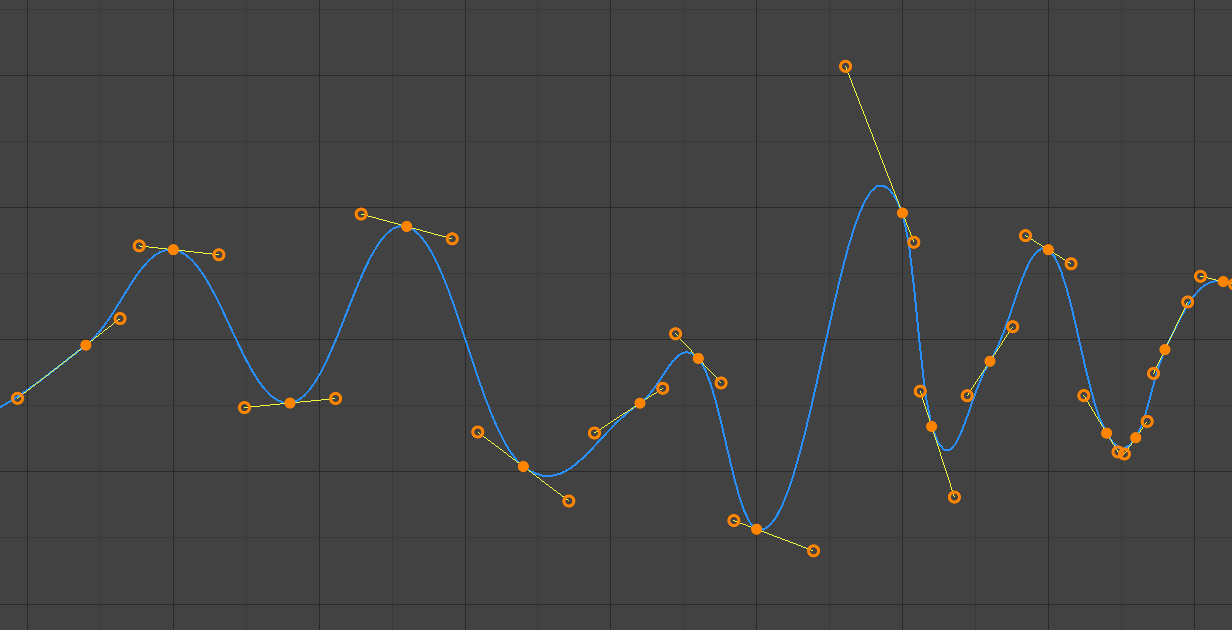
Auto handles.¶
Автоматические ручки, создающие плавные кривые.
- Auto Clamped:

Auto clamped handles.¶
Automatic handles clamped to prevent overshoots and changes in the curve direction between keyframes (S-shapes).
- Вектор (vector):
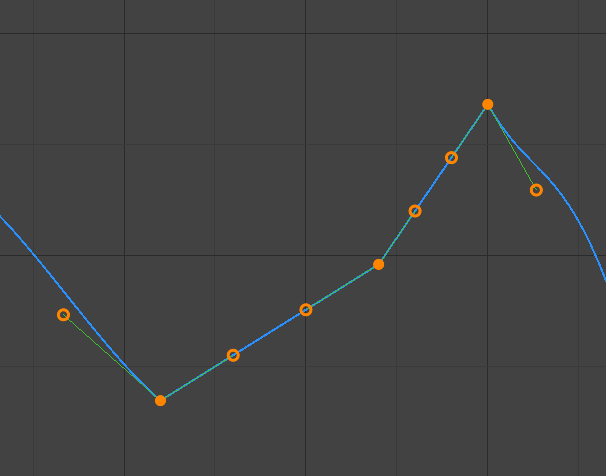
Vector handles.¶
Автоматические ручки, создающие прямые сегменты кривой (как при линейной интерполяции).
- С выравниванием (aligned):
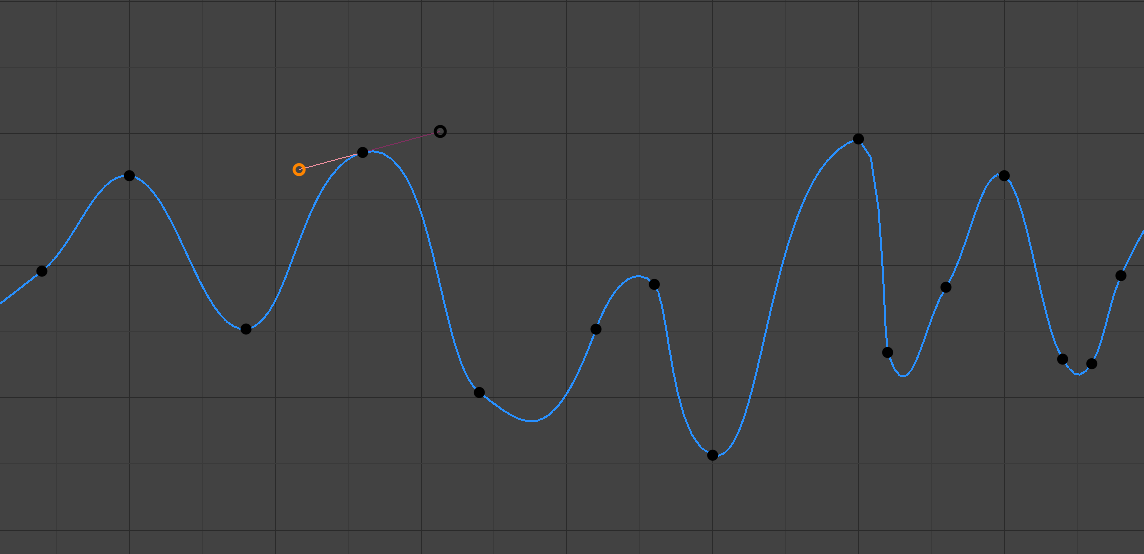
Aligned handles.¶
Две ручки точки кривой заблокированы вместе, чтобы всегда указывать точно в противоположных направлениях. Это приводит к тому, что кривая всегда гладкая в контрольной точке.
- Свободный (free):
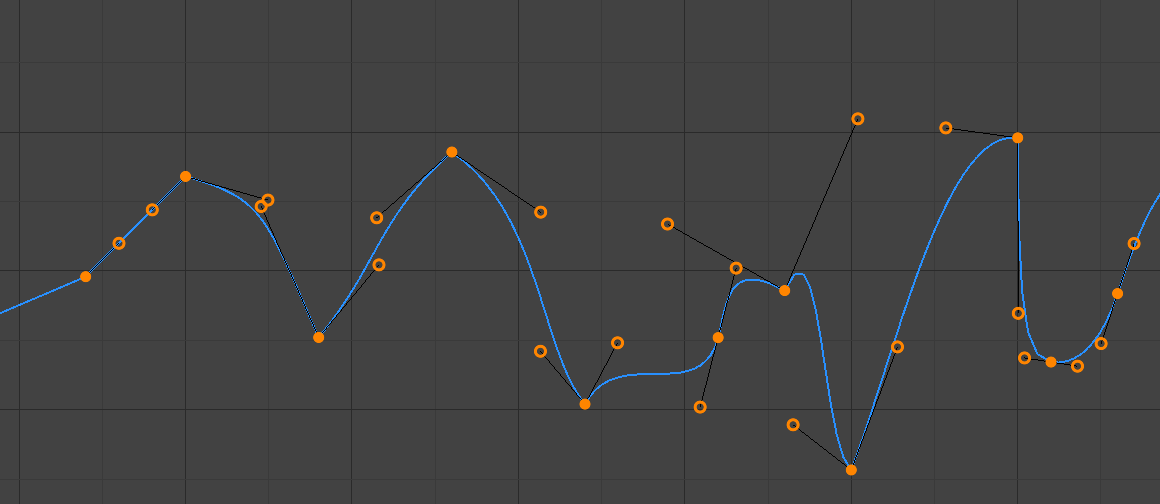
Free handles.¶
Ручки могут двигаться совершенно независимо, что может привести к резким изменениям в направлении.
- Frame, Value
Кадр и значение для левой/правой ручки активного ключевого кадра.